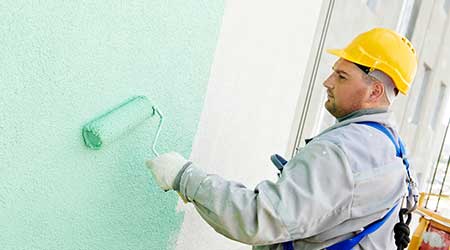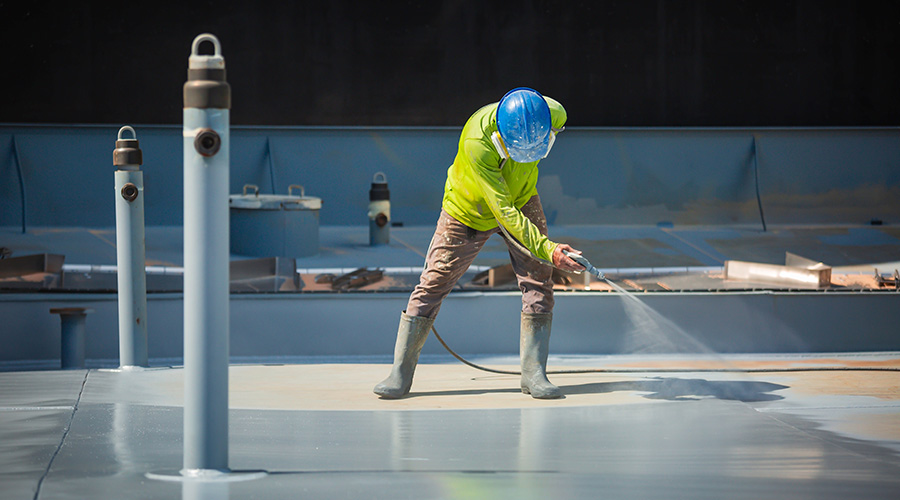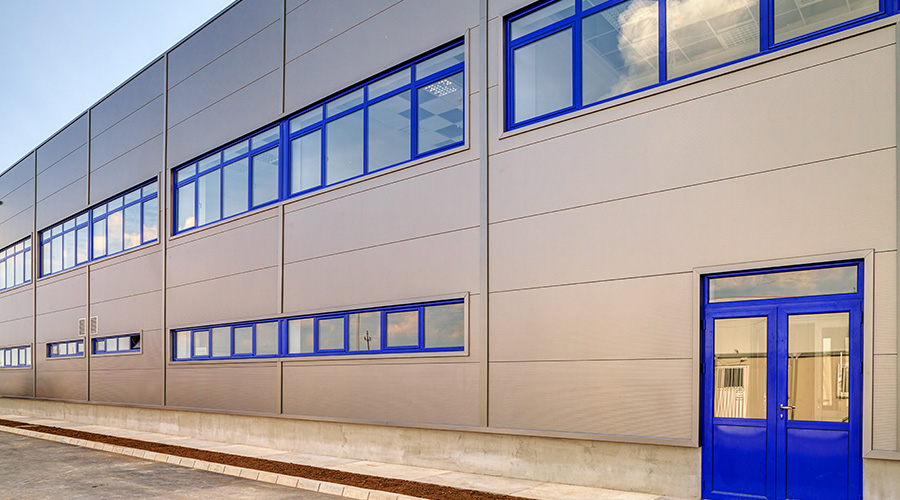 To help maintenance managers specify the most appropriate products for their facility’s needs, manufacturers of paints and coatings have continued to improve their existing products.
To help maintenance managers specify the most appropriate products for their facility’s needs, manufacturers of paints and coatings have continued to improve their existing products.Making Painting Projects Work
Managers can plan projects that perform by understanding new‑generation products and substrate issues.
Applying a fresh coat of paint to key areas of institutional and commercial facilities remains a proven strategy for improving the facility’s appearance and protecting the area from weather, wear and tear. To help maintenance managers specify the most appropriate products for their facility’s needs, manufacturers of paints and coatings have continued to improve their existing products and rolled out new offerings in recent years.
By following changes in the most recent generation of paints and coatings and understanding the coating needs of facility substrates, managers can ensure paint application projects that deliver success and long-term performance.
What’s new?
Continuous research and development in paints and coatings focuses on four main components: pigments, binders, thinners, and additives. Efforts are ongoing to improve products to meet indoor air quality (IAQ) standards — such as Green Seal’s GS-11 for paints, coatings, paints and sealers — related to volatile organic compounds (VOC) and odors.
The cost of paints and coatings has increased an average of 1.6 percent annually over the past three years, but offsetting the increases are advances in formulation, including wider selection, more one-coat products, color enhancements, and more additives for moisture and mold resistance, quick drying, corrosion and abrasion resistance, and better substrate adhesion.
Why do costs vary among paints for the same application? The reason is the variance in cost for the four main components. Products with higher pigment content cost more, especially prime pigment with better color retention and hide characteristics, easier application, and greater durability. Lower-cost extender pigments add bulk but provide little color-retention ability.
The type, quality and amount of binder affects stain resistance, gloss, adhesion, and crack resistance. Higher-quality binders adhere to surfaces better, provide enhanced film integrity, and help prevent cracking, blistering, and peeling. Latex paints contain binders that are 100 percent acrylic — which offers the best quality and comes with highest cost —styrene acrylic, or vinyl acrylic.
Oil-based paints contain linseed oil, soya oil or alkyds. Thinners are liquids — water or solvents — that spread the paint on a surface, then evaporate but provide no better performance.
Top-quality paints have a greater ratio of solids — pigment and binders — to liquids — thinners — while cheaper paints have higher levels of thinners.
Additives customize paints for better hiding, improved durability, mildew resistance, lower levels of odors, and longer shelf lives, and while they might increase cost, they provide significant improvement. Keeping in mind that application cost is 80 percent labor, the proven strategy is to use high-quality products, wash in between applications, and paint less often.
Today’s range of special-purpose epoxies, urethanes, and abrasion-resistant formulas produce longer-lasting results. New urethane-, epoxy-, and quartz-filled epoxy systems offer greater abrasion resistance. Beyond typical applications on floors, they are extending the life of high-wear surfaces on gears, bearings, fan blades, pump impellers, and bushings. As a result, they cut replacement frequencies and parts inventories.
Besides formulation improvements, manufacturers are paying more attention to detailed specification of preparation and application methods, which dramatically extend the useful lives of paints and coatings and reduce life-cycle costs.
For managers with particular cost considerations, newer, high-quality paints and coatings can lower costs because they can withstand multiple washings between applications. This is most applicable to gloss, semi-gloss, satin, and high-quality flat paints and less to lower-quality flat paints, which tend to peel and chip.
Related Topics:















